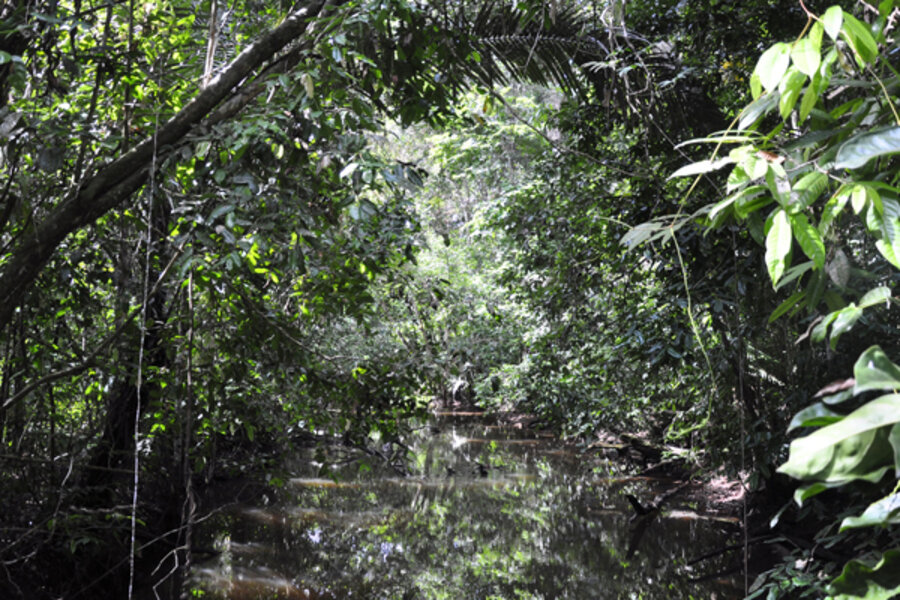The Amazon wilderness, which spans nine countries, is renowned for its superlatives: 40,000 plant species, of which the majority are not found anywhere else. It is also home to more primate species anywhere in the world, possibly more insects as well. The Brazilian government said in December 2011 that deforestation rates in the Amazon, the world’s largest rainforest, had fallen to the lowest levels since 1988.

Bob Walker/Michigan State University/AP
This undated photo released by Michigan State University shows a shaded waterway in the western basin of Brazil's vast Amazon rain forest.




